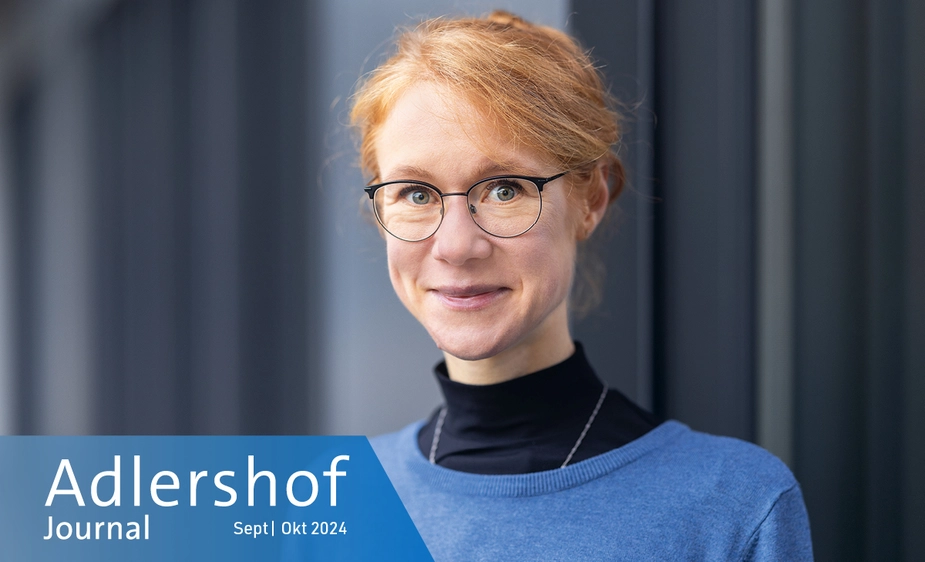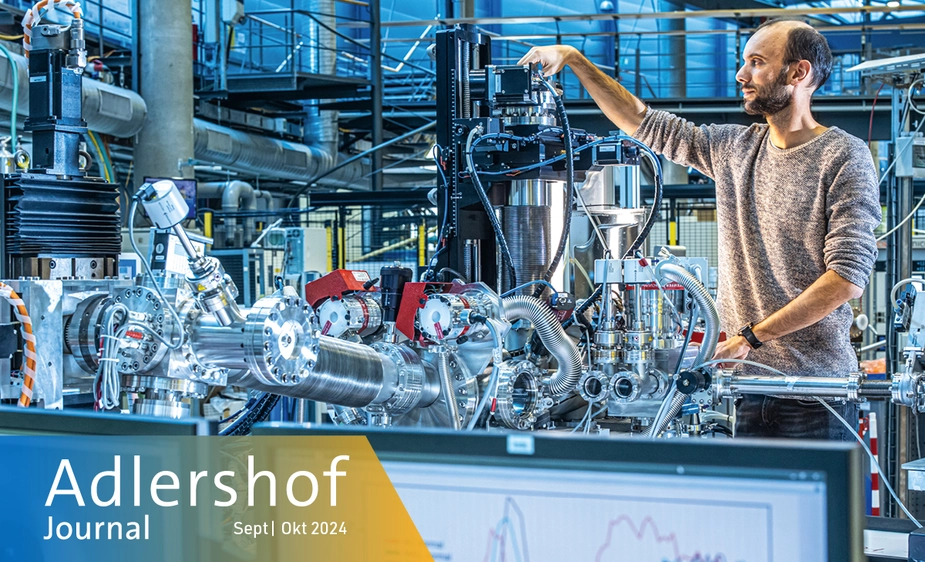Greenhouse gas neutral research
HZB wants to be a role model for a clean future
“When a research institution is heavily focused on renewable energies, it should set an example in its efforts for climate protection,” says Carina Hanke. “Because of this, HZB has committed itself to become greenhouse gas neutral.” To the climate and energy manager, this had already been a personal passion for her before she came to Helmholtz Centre for Materials and Energy (HZB) a few years ago. When she did, she quickly set up an environmental team at HZB, which became a platform for its staff for topics like sustainability, the environment, and energy. Together with the Environmental Working Group, she developed a daring idea: Making HZB greenhouse gas neutral by 2035. Convincing management was like preaching to the choir. “After we made our recommendation, the goal was immediately anchored in the HZB strategy paper,” she says.
However, this also created the first hurdle for the team to take. There was no status quo. Nobody knew, at least not in detail, what the major emissions sources at HZB were. Was it electricity? The electron storage ring BESSY II alone consumes a good 30 gigawatt hours per year, as much as 10,000 households. Or was it heating and cooling—responsible for creating an ideal office and laboratory climate? How does commuting and business travel contribute to greenhouse gas emissions? “Our first step was to create a greenhouse gas emissions balance,” says Hanke. “To do so, we opted for the Greenhouse Gas Protocol as the basis. This is the now internationally recognised standard in this area.”
The protocol specifies exactly how to calculate the emission of climate-impacting gases. To this end, it defines three emission scopes. Direct emissions are produced on site. Through one’s company vehicles, for example. Indirect emissions occur from sources outside of the immediate operation, including consumed items like electricity from the grid. And then there are the upstream and downstream emissions from the value chain. They are the result, for example, of purchasing goods, waste, and business travel. According to the Greenhouse Gas Protocol, direct and indirect emissions must be recorded.
Those that cannot be directly controlled, however, are voluntary. “Both for HZB and for me, it was very important to choose an honest approach. That’s why we covered all three areas,” says the manager. “Green electricity, which is estimated to have 0 emissions, was also considered in scope 3. After all, green electricity, too, must be generated, transported, and distributed.”
When the balance was completed in the year 2023 and verified by an independent party, the HZB had its status quo. “We could then determine the five main causes of our greenhouse gas emissions,” says Hanke. “Heat supply, power supply, commuting of staff, procuring equipment, and construction projects.” This revealed the necessary levers to achieve the major objective. Carina Hanke has been setting these in motion ever since. The heating system now operates using biomethane instead of natural gas. The electricity comes from Scandinavian hydropower. The few small areas that still receive conventional electricity mix are already on her list. And what about mobility? “We also addressed commuting,” she says. “Charging options for electric vehicles are now being offered and we have been certified as a bicycle-friendly employer since the beginning of the year.” Even before that, HZB had been offering a job-issued public transport ticket with employer subsidies. “Around 500 of our 1,200 employees now use it. That's a very good rate. Demand continues to grow.”
“The new building projects, of which there are quite a few in Adlershof, also emphasise sustainability.” For example, by including photovoltaic and heat recovery systems. However, despite putting in maximum effort, it is impossible to eliminate all emissions. For this reason, HZB also relies on compensation as a solution of last resort, paying certain sums to certified offsetting programmes. “The whole thing is an ongoing process that has taught us an incredible amount,” says Hanke. “We look forward to sharing this experience with the public.”
Kai Dürfeld for Adlershof Journal

